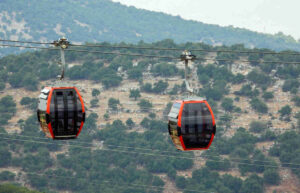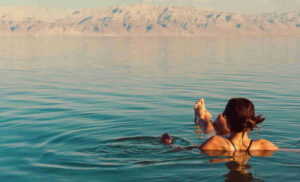Dana is one of Jordan’s best and most unknown surprises. From Madaba to the south of Jordan, the King’s Road passes through Karak and has a clear destination: Petra. For this reason, the vast majority of routes make this journey as quickly as possible to reach this magical destination as soon as possible. But if you are lucky enough to have the time, desire and energy, you can deviate slightly off the path to enter Wadi Araba, about 50 km before reaching Petra: this will give you access to Dana and the Nature Reserve that takes its name from it. Here we tell you what to see, what to do and why it is worth getting here.
Dana: A Genuine Ottoman People
Dana is a small town founded in Ottoman times. Its particular location, on the edge of a cliff and off the beaten track, has kept it intact. A few decades ago, its inhabitants abandoned it almost completely, in search of greater economic possibilities along the Carretera del Rey. But in recent years, thanks to the boom in ecotourism, many are returning and exploiting the possibilities offered by this special place.
Without going any further, the terraces once created on the land for the cultivation of vegetables and fruit trees have greened again, in many cases with the spontaneous emergence of native plants. The houses of the village maintain their traditional architecture, of great humility and austerity, with rock from the environment, so it integrates very well into the landscape.
In addition, some workshops in the town offer activities to learn about the local and ancestral culture, such as drying fruit in the sun or jewelry inspired by the nature of the reserve, in materials such as silver, bronze or copper, the latter naturally present in the mountains but not industrially exploited through intensive mining.
Dana and Feynan: Biosphere Reserve
The vast territory around the village of Dana is protected in the form of a Biosphere Reserve, which also encompasses the Wadi Feynan, a canyon of great interest, so it is common to refer to it by both names. It is the largest nature reserve in the country, with an area of about 32,000 hectares.
From a natural point of view, the most interesting thing is its surprising variety. In the words of the institution that manages it, the Royal Society for the Conservation of Nature of Jordan, it is the only one in which the four biogeographical areas of the country are present: Saharan-Arabic, Mediterranean, Iranian-Turkany and Sudanese.
This means that the variety of species of flora and fauna is very high, with more than 800 of the former and almost 350 of the latter having been catalogued so far. For this reason, it is an ideal place for nature tourism and observation, because with luck you will be able to see specimens of common but also endangered species: Nubian ibex, spiny-tailed lizard, lesser kestrel…
There are many signposted or pre-established trails to explore this environment. Among them are Wadi Dana, Wadi Dathneh, Nawatef or Wadi Ghweir, the latter due to the gravel bed of a seasonal stream that can bring water. The difficulty varies from one to another and it is always advisable (and sometimes mandatory) to do them with a professional instructor.
Finally, another attraction of visiting Dana and its Nature Reserve is to stay in its ecolodges: ecological accommodationsthat have been established in the aforementioned traditional rock constructions and materials of the area, which is an experience of rest and contact with nature, the clean sky and the local people.



